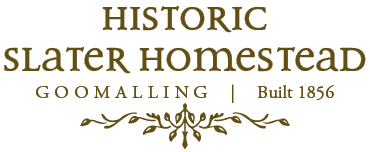History of Slater Homestead

Pioneering life in the 19th Century
Step back in time with a visit to the heritage listed Slater Homestead for a taste of pioneering life in the 19th Century.
The Homestead was the first development in the area, built in 1856 on a pastoral lease by George Slater, the first pioneering settler to arrive in Goomalling, initiating further development in the region
George Slater arrived on our shores on 20 august 1842 aboard the ‘Simon Taylor’ and was the first European settler in Goomalling and built the main homestead in 1856 on a Pastoral Lease. The following year he married Mary and over the next 20 years had 12 children. During the early 1860’s George built the stone barn and expanded his lease breeding remount horses for the Indian Army.
Residents of the district were unsuccessful in their request for the Board of Education to provide a school for the children of the area. Consequently, George Slater built a school room and residence and engaged the services of a schoolmaster, who spent the next 30 years in the district as a teacher for the children of the district.
During the gold-rush era of the late 188O’s George Slater secured a Wayside Licence and the Slater Homestead became an Inn, providing accommodation and meals to travellers and chaff and corn for their horses. The settlement became a haven for prospectors en route to the Yilgarn, including Bayley and Ford who discovered gold in Coolgardie, and many explorers, reputedly including the now famous Sir John Forrest, who started his journey inland in search of the remains of the Leichardt expeditions from the Homestead.
With a gathering of family and friends George and Mary Slater celebrated their golden wedding anniversary in 1907. An additional stone room was added to the Homestead for the occasion and is now utilised as a Tearoom. In 1929 a centenary dance was held at the Homestead in acknowledgement of it being the oldest residence in the district, as part of the States Centenary Celebrations.
Following the death of George Slater in 1917 the property was inherited by his youngest son Thomas and following his death in 1930, passed into the management of the West Australian Trustee Executor Agency Company Limited.
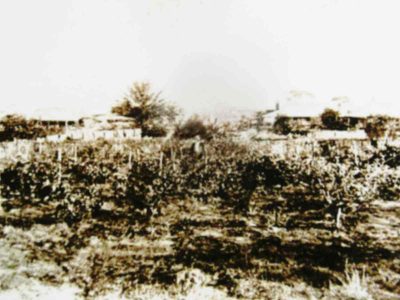
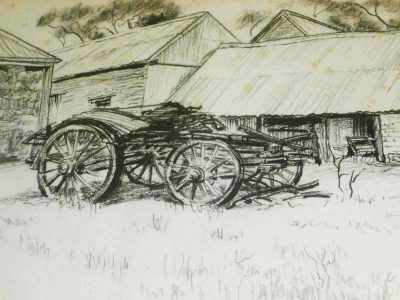
Pioneering life in the 19th Century
Step back in time with a visit to the heritage listed Slater Homestead for a taste of pioneering life in the 19th Century.
The Homestead was the first development in the area, built in 1856 on a pastoral lease by George Slater, the first pioneering settler to arrive in Goomalling, initiating further development in the region
George Slater arrived on our shores on 20 august 1842 aboard the ‘Simon Taylor’ and was the first European settler in Goomalling and built the main homestead in 1856 on a Pastoral Lease. The following year he married Mary and over the next 20 years had 12 children. During the early 1860’s George built the stone barn and expanded his lease breeding remount horses for the Indian Army.
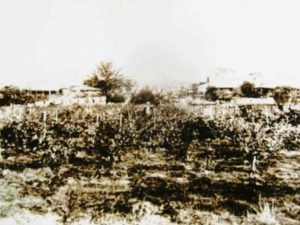
Residents of the district were unsuccessful in their request for the Board of Education to provide a school for the children of the area. Consequently, George Slater built a school room and residence and engaged the services of a schoolmaster, who spent the next 30 years in the district as a teacher for the children of the district.
During the gold-rush era of the late 188O’s George Slater secured a Wayside Licence and the Slater Homestead became an Inn, providing accommodation and meals to travellers and chaff and corn for their horses. The settlement became a haven for prospectors en route to the Yilgarn, including Bayley and Ford who discovered gold in Coolgardie, and many explorers, reputedly including the now famous Sir John Forrest, who started his journey inland in search of the remains of the Leichardt expeditions from the Homestead.
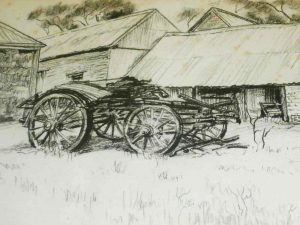
With a gathering of family and friends George and Mary Slater celebrated their golden wedding anniversary in 1907. An additional stone room was added to the Homestead for the occasion and is now utilised as a Tearoom. In 1929 a centenary dance was held at the Homestead in acknowledgement of it being the oldest residence in the district, as part of the States Centenary Celebrations.
Following the death of George Slater in 1917 the property was inherited by his youngest son Thomas and following his death in 1930, passed into the management of the West Australian Trustee Executor Agency Company Limited.
Heritage Listing

After its pioneering hey-day, Slater Homestead fell into disrepair, and was classified by the National Trust in 1993 .
Following years of negotiations the Shire of Goomalling acquired the iconic Homestead in 2000 and engaged the services of a Heritage and Conservation Consultant to prepare a Conservation Plan, and as a consequence was considered and entered into the State Register of Heritage Places in 2004.
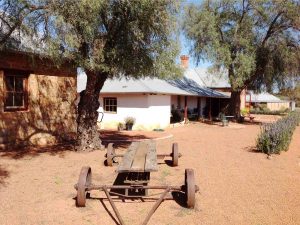
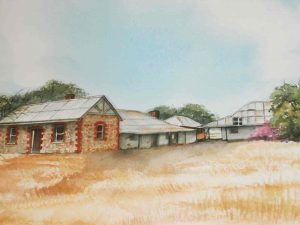
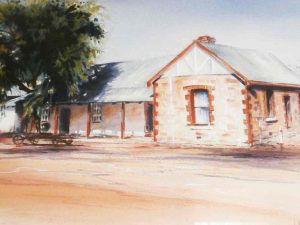
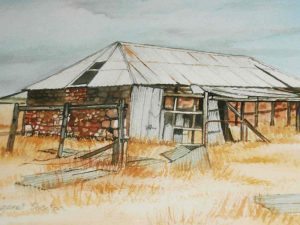
Restoration Works

Restoration work began in 2002 with funding received from Lotterywest, ensuring the important historical landmark is preserved for future generations to explore and enjoy, and now Slater Homestead is once again standing proudly as testament to the pioneering spirit and foresight that opened up the heartlands of Western Australia.
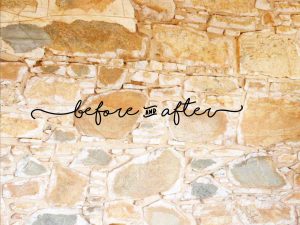
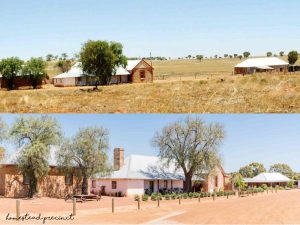
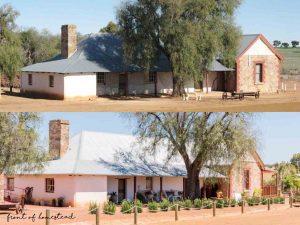
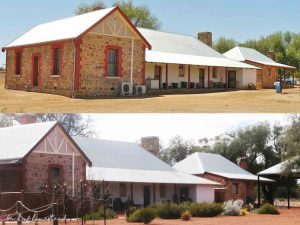
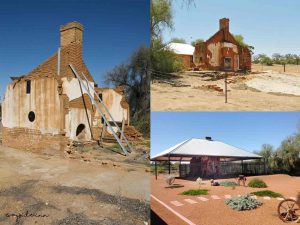
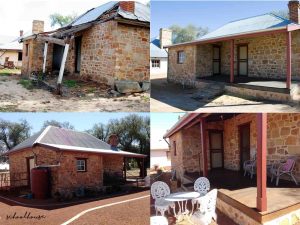
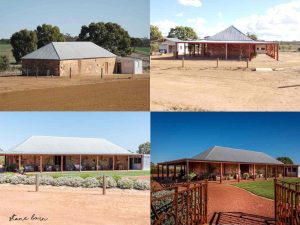
Visiting Slater Homestead

The delightfully refurbished buildings are open to the public every weekend from the beginning of April to the end of October from 10am to 4pm.
Devonshire teas and light lunches are available to visitors in Mary’s Tearoom.

